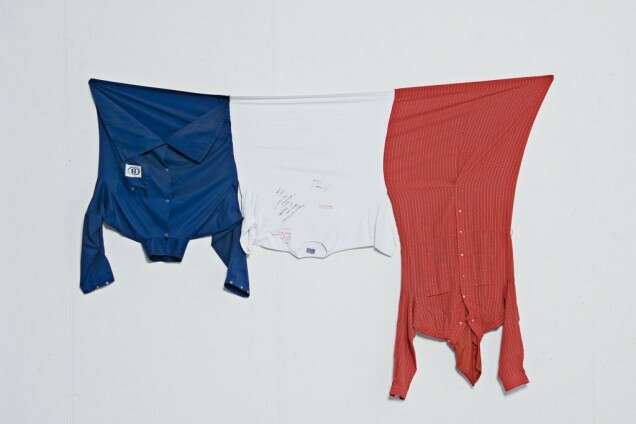Group Show
Expats / Clandestines
For its inaugural show, Wiels focuses on a phenomenon that has become increasingly common over the past decades: namely cultural nomadism, hybridism and displacement. In Expats & Clandestines, these concepts are approached from an aesthetic viewpoint, through the works and ideas of seven prominent artists, which are related to the everyday social and economic reality of migration as a global yet specific phenomenon.
With Saâdane Afif, Francis Alÿs, Nairy Baghramian, André Cadere, Gabriel Kuri, Moshekwa Langa and Chen Zhen

The title Expats & Clandestines is thus intended as a metaphor. It is not a documentary exhibition with a collection of testimonies about the harsh reality and turmoil of the global human traffic. The exhibition presents paintings, sculptures, drawings, films and installations. The theme of multiplicity is therefore also represented through the various disciplines that will occupy the space of Wiels for the first time. Three artists will be showing new creations. For the others, existing but rarely exhibited works have been chosen.
Expats & Clandestines introduces individuals who have consciously decided to live somewhere else (Andre Cadere, Francis Alÿs, Gabriel Kuri or Moshekwa Langa), to evolve in a foreign environment or even inner asylum, for biographical reasons or as a result of political situations (Saâdane Afif, Nairy Baghramian, Chen Zhen). Wiels, however, did not choose these artists because of their respective background but for the subtlety and the precision with which they allow composite identities, be they art historical, cultural or subjective references, merge and confront a new transnational identity. Against the background of global migrations, the artistic postures of instability and permanence, strangeness and familiarity, belonging and loss, are notions which reveal the ambiguous and contradictory experience of migration as a permanent cultural challenge.
In Brussels, as in more and more cities, there is a great deal of public discussion surrounding the incoming stream of expatriates, even though their presence is barely noticeable. Their existence is almost always considered from a purely economic perspective. The expatriates are seen as a factor and consequence of the economic process of globalisation as well as the cause behind the rise of the cost of living. At the same time, there is a constant debate around the more visible and diverse forms of semi-legal and clandestine migrations. Altogether, the presence, the (in)visibility and the controversy in the public opinion surrounding both migration categories, pose challenge to Brussels in particular, where an intercultural dialogue between the two linguistic communities of the country, their representatives and the various demographic majorities and minorities are a daily reality
This flagrant duality in the perception and cultural representation of the migrant between expats and clandestines is at the heart of this exhibition project which ambitions to look over division lines in order to better grasp the phenomena of complex biographies and extreme cultural mix that characterise contemporary life. Beyond visibility and anonymity, presence and absence, the signs, forms and economies of individual/collective differences become tangible.
The exhibition will be accompanied by a publication.